Our Shopify vs WordPress Comparison: We Review Features, Pricing, and More
If you click to purchase a product or service based on our independent recommendations and impartial reviews, we may receive a commission. Learn more
Shopify is the king of ecommerce, but WordPress powers nearly 40% of all websites. If you’re wanting an online store builder, who should you trust? Shopify is more specialized but also provides fewer customization options for website builders. WordPress is tried and tested, having stood and dominated while other website builders rose and fell.
In our opinion, Shopify wins this battle. Its ecommerce features aren’t just for show, and as a platform, it looks primed to become a mainstay in the world of online retail, up there with Amazon and eBay. However, WordPress still has its advantages. Its open-source nature means there’s almost limitless customization with how you create your store, as long as you don’t mind the work.
Who Do We Recommend Each For?
Shopify is the best for managing your online store
With everything coming in one package, Shopify is the best choice for users who want an easy time running their online store. Everything can be accessed from the Shopify dashboard, meaning you can just log in and get to work.
WordPress is the best for customizing your online store
If you want your online store to stand out against the crowd or need some specific tools, WordPress may be better for you. You can endlessly add new features and themes and keep your store fresh, though it will require more work.
Shopify vs WordPress: Quick Comparison
Need to see the builders up close and personal? We’ve put together this quick comparison table summarizing each research category, so you can see how each stacks up:
| Shopify vs WordPress | Shopify | WordPress |
| Pricing | Shopify's plans can seem more expensive on paper, but they include everything you need to run an online store in one package. Additionally, Shopify's TCO Calculator recently proved its cheaper to operate overall than its WordPress competitors. | Free to use but can quickly escalate to a few hundred dollars per month when you pay for themes, hosting, plugins, and tutorials. |
| Selling | Comes with all the ecommerce features you need to sell online and scale your business, and our top-rated platform with a 4.8 out of 5. | Most of the main plugins have decent ecommerce features, but you may need to search for separate tools for things like analytics. |
| Apps and Features | Has more features built-in than WordPress, and a top-quality app store to supplement any specific tools your store needs. | Almost entirely reliant on plugins. Has a huge plugin store of over 59,000 choices, but the quality is not as consistent as Shopify. |
| SEO and Marketing | Built-in SEO and marketing features allow you to optimize your website and improve your web page’s rankings. It is easier to use but lacks the depth of WordPress's plugins. | You'll have to download them as plugins (with a possible extra cost), but you'll get more in-depth control and tailored features. |
| Set Up and Editor | All-in-one-place, so an easier set-up. However, users have found the editor to be confusing to navigate. | More technical and initially confusing. However, there are plugins that can be added to be simpler to use, plus there is limitless customization available. |
| Templates | Nicely designed themes, but only 12 free ones. The rest cost between $70 - $350. | Nearly 12,000 free themes, many built for ecommerce stores with a choice to use a paid one if need be. |
If you want to know more, you can read our full, in-depth thoughts and evaluations in our full Shopify Review and WordPress.org Review
What Do I Need to Sell on WordPress?
When we’re talking about WordPress in this article, we’re referring to WordPress.org, not WordPress.com. WordPress.com is a more traditional website builder for blogging, whereas WordPress.org is an open-source platform to create any kind of website – including online stores – so it’s the one we’ll compare against Shopify.
To create an online store on WordPress.org, you’re going to need two essentials: a hosting provider and an ecommerce plugin. A hosting provider is what will get your website online. Shopify includes hosting in its plan, but you’ll have to source it yourself for WordPress.
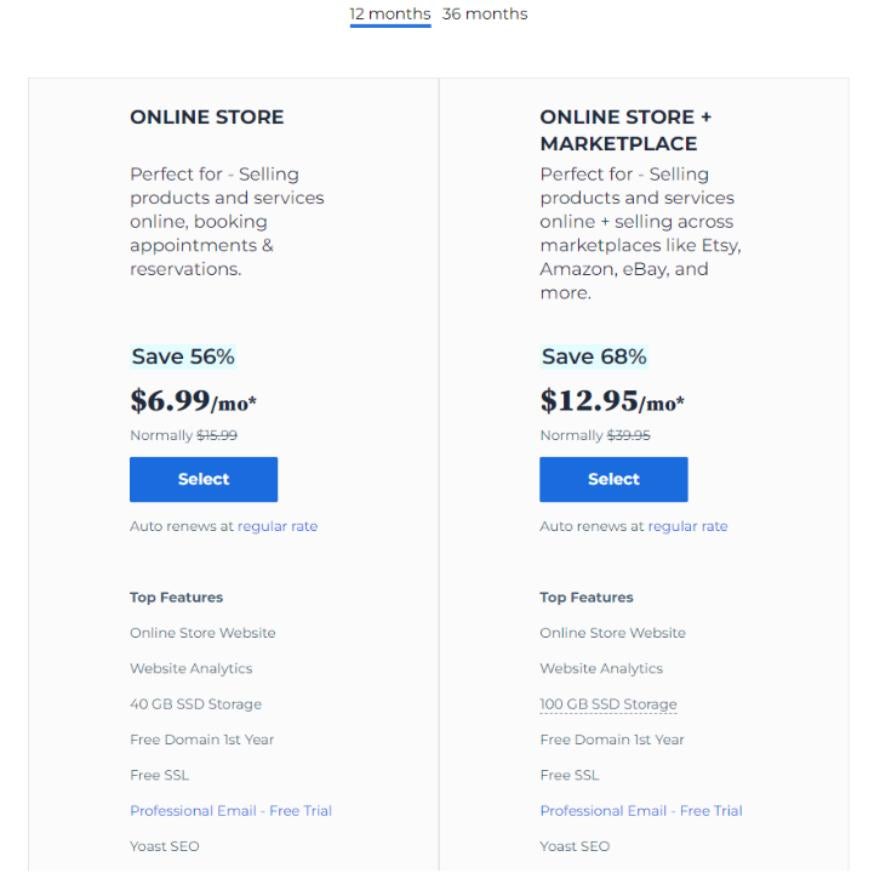
Both we and WordPress recommend Bluehost as a hosting provider. It ranked first in our hosting research and provides plans built specifically for online stores (and even WooCommerce-tailored plans).
You will also need an ecommerce plugin to give your WordPress site the ability to sell. The most popular is WooCommerce. You can actually see how it squares up against Shopify in our WooCommerce vs Shopify article, but for now, when we reference ecommerce features, we’ll be referring to those on WooCommerce.
Which Is The Best Value for Money? – Shopify
Running an online store can be an expensive endeavor, so you must receive the best value for your money. If it’s not going to help you sell, then it’s an unnecessary expenditure.
WordPress Pricing
Technically, WordPress is completely free to download and use – as is the ecommerce plugin WooCommerce. Simple, right?
Sadly, no. WordPress just facilitates the building of a website: it is up to you to find and download all the features and functionality you want, including essentials such as a hosting provider – all of which costs money. Here’s a breakdown of the average costs for maintaining a WordPress store:
| WordPress Website Hosting Costs | Monthly Costs: anywhere between $5 – $100
|
|---|---|
| WordPress Tutorials & Courses Costs | Monthly Costs: free to $50+
|
| WordPress Theme Costs | One-time Cost: free to $5,000+
|
| WordPress Plugin Costs | One-Time Cost: $50 – $500 and/or Monthly Costs: $5 – $150
|
The limitless possibilities of WordPress can quickly become a burden if you are not careful with everything you’re adding to your site. Compared to Shopify, it’s a lot easier to lose track of spending with WordPress. Therefore, it falls to you to budget carefully and have a plan when signing up for WordPress – something you don’t need to do with Shopify.
For a hosting provider, we recommend the Bluehost Online Store plans for WordPress. The Basic plan begins as low as $6.99 per month (billed annually) for the first year (afterward, it will renew at the regular rate of $15.99 per month) and will net you a free domain, free professional email, free SSL certificate, and 40GB of storage – if you need more, you can always upgrade your plan.
Shopify Pricing
Shopify’s pricing is split into four plans, with all providing ecommerce features:
- Basic – $29 per month billed annually
- Shopify – $79 per month billed annually
- Advanced – $299 per month billed annually
- Plus – $2,300 per month on a three-year term
Shopify scored quite low in our research for value for money. While its sales features are certainly good quality – the best in our rankings, in fact – its offerings just don’t quite match the asking price, especially when competitors like Wix or Squarespace offer similar tools for less.
However, new users can enjoy a three-day free trial, and if you sign up after, you can get your first month of Shopify for only $1.
However, like WordPress, you’ll have additional optional fees to deal with, like:
- Plugin subscriptions – $13-$75 per month
- Themes – $70 – $380 (one-off payment)
- Processing fees – Shopify Payments charges a 2.9% + 30¢ processing fee for all major credit cards
- Transaction fees – If you opt to not use Shopify payments, then there’s an extra 2% fee to pay on all transactions.

Despite Shopify’s high starting price and its additional fees, it’s still better value than WordPress. Why? Well, for starters, included in Shopify’s plans is the price of convenience. Unlike WordPress, you have all your sales and business tools in one place for Shopify, making it easier to manage your store.
Secondly, Shopify actually proved its better value for money with data. Its recently rolled out TCO Calculator (Total Cost of Operation) proved that Shopify is 36% cheaper on average to operate than WooCommerce – even with all the additional fees.
Read the full Shopify Review for more
The Winner
Shopify has the best value for money
Which Has the Best Sales Features? – Shopify
Ecommerce tools are what you’ll use to sell products and receive payment. With Shopify, they are built into the platform, whereas WordPress requires a plugin like WooCommerce.
Shopify is an ecommerce platform meaning it has been designed specifically with selling in mind. As such, all of its tools and features serve online stores in some way. For instance, when you first boot up Shopify, you are asked to start adding your products before you get to design the site.
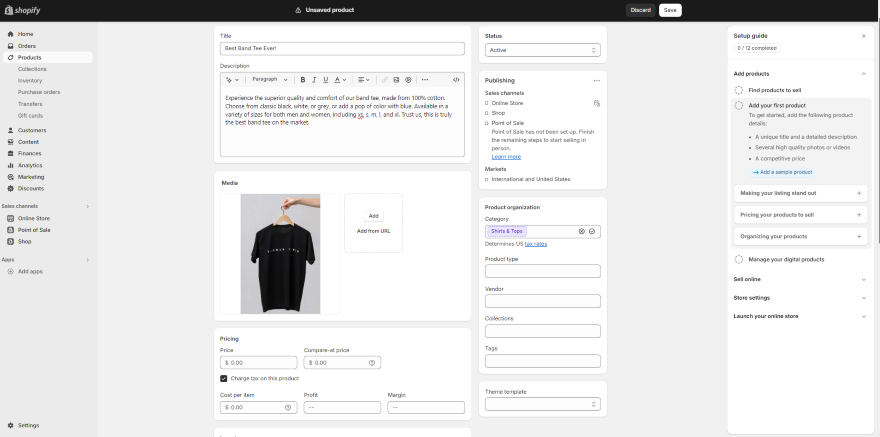
While WooCommerce’s sales features are great – earning high scores in our research – it is only one plugin amongst the many WordPress has, meaning it doesn’t feel like such a dedicated platform as Shopify.
In terms of actual sales features, Shopify offers the best we’ve ever tested, ranking first in our overall list for ecommerce website builders. We won’t run through them all here (there’s an in-depth Shopify review for that), but here are some choice favorites and what they can do:
- Abandoned Cart Recovery – Set up your site to send email reminders to customers who leave your website with items in their cart before checking out.
- Discount Codes – Create unique codes that customers can use at your checkout for money off. These are also great to use in email marketing.
- Multichannel Integration – Don’t just limit yourself to your website, sell directly across major social media platforms and global marketplaces, like TikTok and Amazon.
WordPress doesn’t have any ecommerce tools built in. Instead, you will need to download and install an ecommerce plugin. WooCommerce is the most well-known and comes with all the standard features needed to sell, such as:
- Sell unlimited products, both physical and digital
- Built-in blogging option
- Product reviews and ratings
- Product sorting and filtering
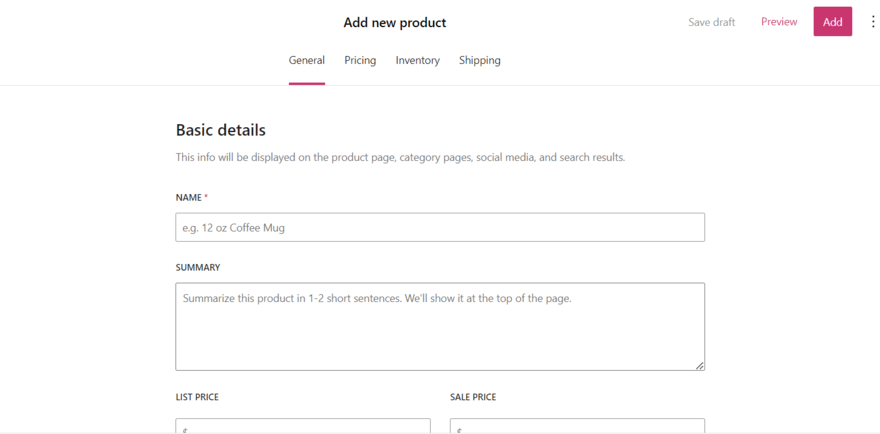
There are other options, such as Ecwid – but next to Shopify, none are as simple to use. On the upside, they both are free to install – but as mentioned above, you’ll need more tools overall to run your store.
Read our full Shopify versus Ecwid comparison for more
The Winner
Shopify has the best sales features
Who Has the Best Apps? – Shopify
Shopify has over 8,000 apps ready to be used by Shopify merchants. These apps range from multichannel selling like Amazon and eBay integration to neat features like Buy Buttons or Product Reviews. These apps all serve to make your store stronger, and Shopify tries and tests them over 100 times before they make it to the official store.
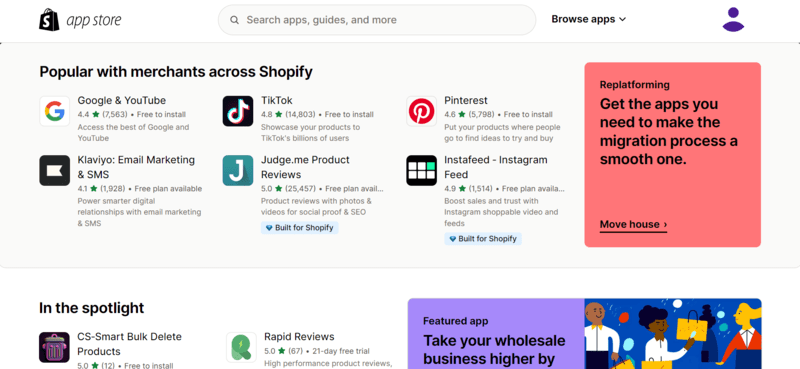
WordPress greatly exceeds Shopify in the plugin department with nearly 60,000 plugins to choose from. Like Shopify, they have great ecommerce tools available like email marketing from Mailchimp or shipping tools from DHL – you can even use a Shopify plugin in WordPress!
While some of the plugins are free, others are premium and will require a monthly subscription to use. WordPress plugins average between $5 – $150 per month or a one-off payment of $50 – $500. Shopify apps are cheaper on average, costing a median of $20 per month, but take into consideration that for WordPress, the vast majority of the 60,000 plugins available are free.
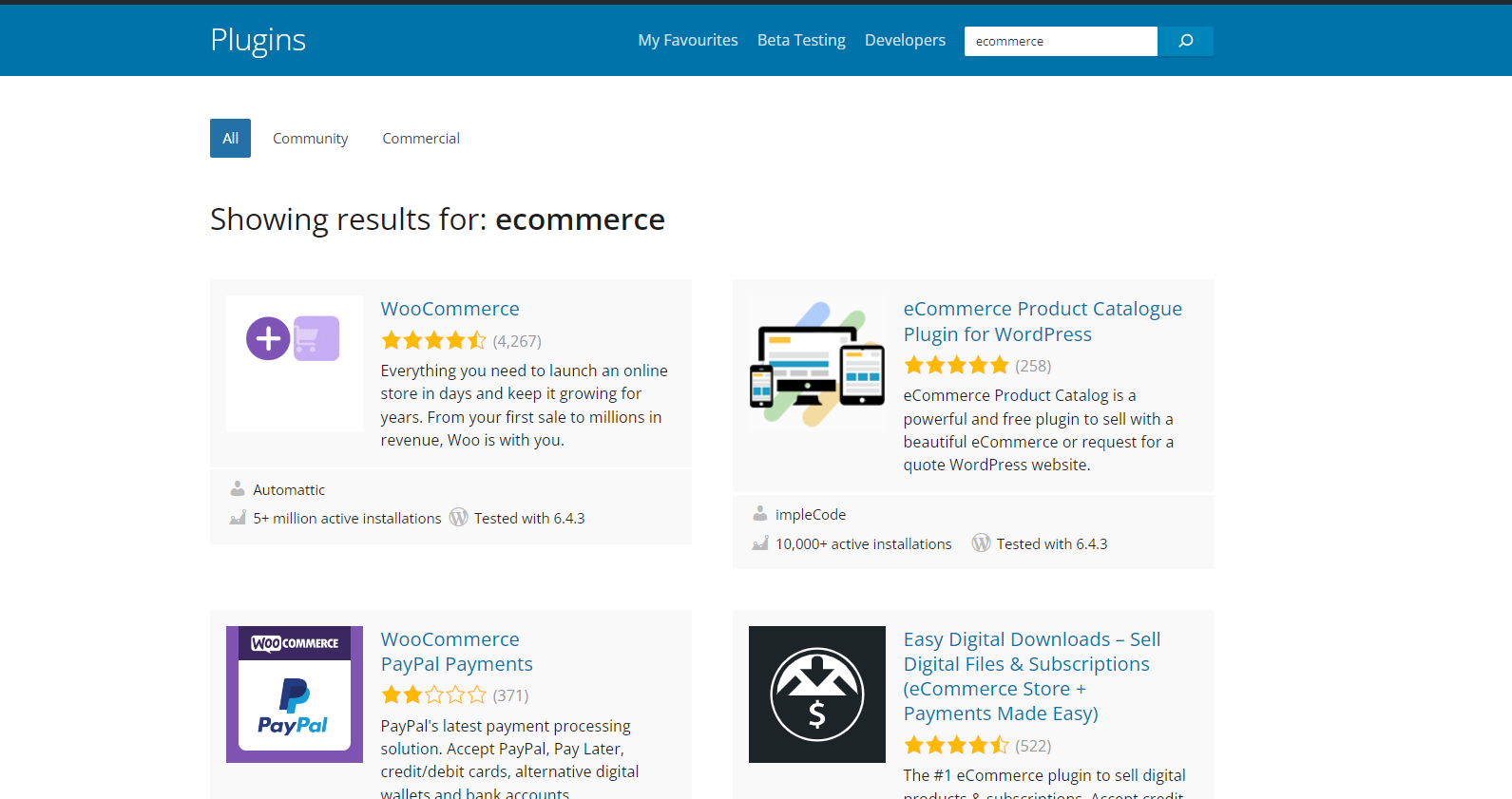
While having such a large number of plugins gives users the best choice, there’s also less quality assurance – especially if the majority are free. We’ve reported in the past that many WordPress apps get exploited by hackers to gain your private information. While more of Shopify’s apps are premium, the quality and security are therefore more guaranteed.
Read the full Shopify Review for more
The Winner
Shopify has the best apps
Who Has the Best SEO and Marketing? – It’s a Tie!
Just filling a store with products isn’t enough to get customers to buy them. There’s no main street advertising your store on the internet, so you have to be loud and persistent in attracting new customers, which means marketing and SEO.
Shopify has a number of built-in marketing tools for merchants to use, such as Shopify Email for email marketing campaigns, as well as contact forms for collecting leads. These are great for getting your store’s name out there, as are Shopify’s multiple social media integrations. Whether it is Instagram, Facebook, or TikTok, you can advertise your store across multiple channels.

WordPress will require plugins for most of its marketing, but it does have a great selection:
- Hubspot for CRM
- Mailchimp for email marketing
- Google Ads & Listings for creating ad campaigns
- Pretty Links for affiliate marketing
That being said, there is still the issue of having to go and add this all yourself. With Shopify, you can access it all from the dashboard – a much simpler process for beginners. However, marketing is only one side of the coin. To get actual visitors to your store, you are going to need to make sure your site is SEO-friendly.
SEO can be tricky to master due to it being based on technical factors, like your site’s formatting, file sizes, and how many outgoing links you have. As such, you can have greater control over your SEO with WordPress, thanks to its open-source nature. If you have the know-how, you can tweak and alter key factors like site speed and security allowances – all of which can’t b directly accessed and altered with Shopify.
If you prefer letting a tool do all the work, then the plugin Yoast SEO is one of the web’s most trusted SEO providers. You can download it for free, or pay $69 per month for the more advanced version with extra functionality.
That’s not to say Shopify doesn’t have good SEO. It scored top marks in our research, giving you access to SEO tools like:
- Adding and editing meta titles/descriptions – the headline and text that appears in Google
- Customizing URL slugs – the text that comes after your domain, e.g. www.websitebuilderexpert.com“/ecommerce-website-builders/comparisons/wix-vs-shopify/”
- Attaching alt text to images – text that Google reads to understand what your images depict
- Access to SEO best practice prompts – guidance on how to optimize
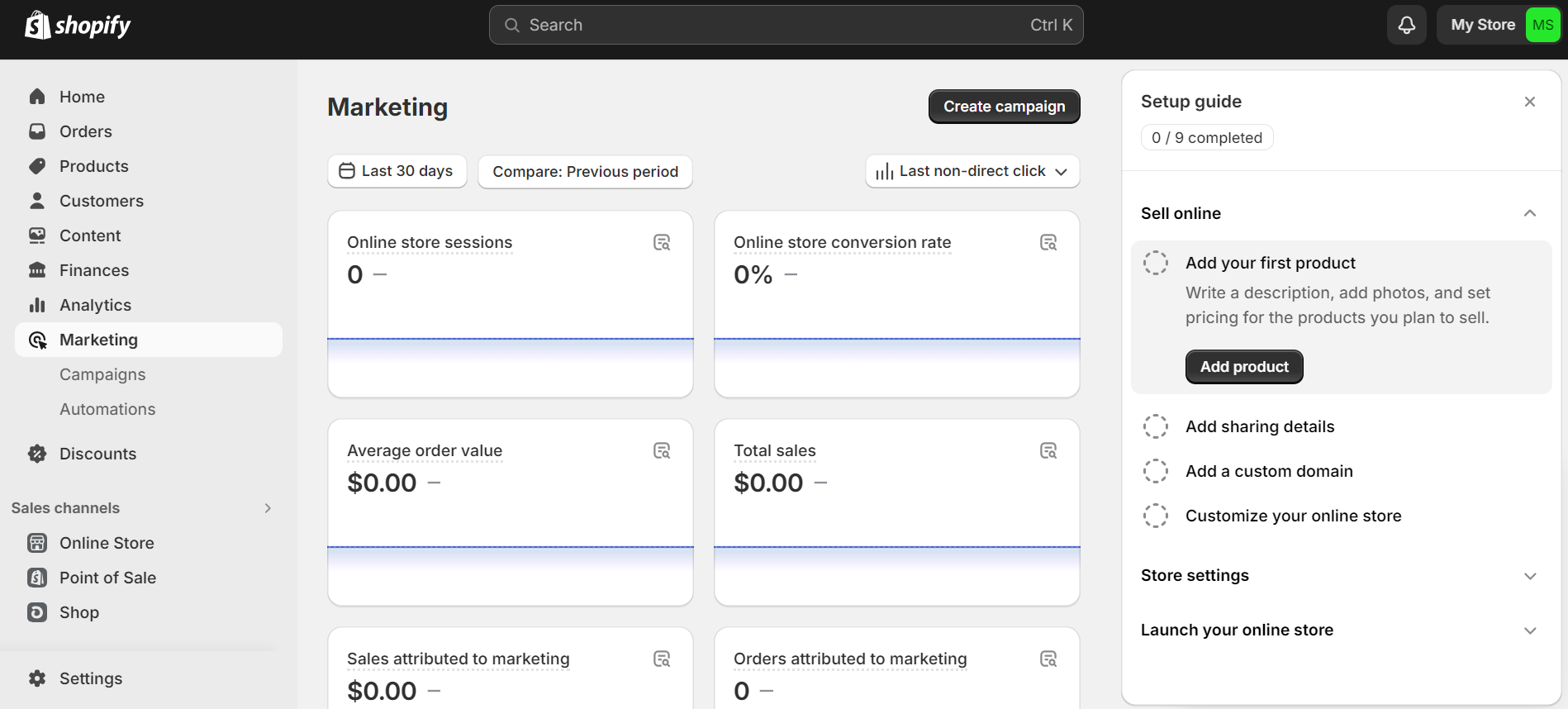
The Winner
It’s a Tie! Both Shopify and WordPress have equally good marketing and SEO
Who Has the Best Setup Experience? – WordPress
The ability to code will really determine which builder is easier to use. WordPress users will get more out of the platform with some coding knowledge, giving you more customization options to build – but also more work. Website builders like Shopify are built to be as accessible as possible for beginners, featuring handy tools like drag-and-drop editors and plenty of tutorials. In our own research, Shopify scored pretty well for ease of use.
Once you set up with Shopify, you’ll be immediately asked to input your products. This is done to save time doing it later, and means you build your store around your products, rather than starting with color schemes and fonts. This makes Shopify slightly different from other builders, which usually lets you start designing your site first.
Though creating product pages can be tedious, Shopify has at least tried to make the user experience better thanks to Shopify Magic – an AI generation tool. Simply describe your product with a few key features and using AI, Shopify Magic will create a product description, saving time and energy that can be better used elsewhere.
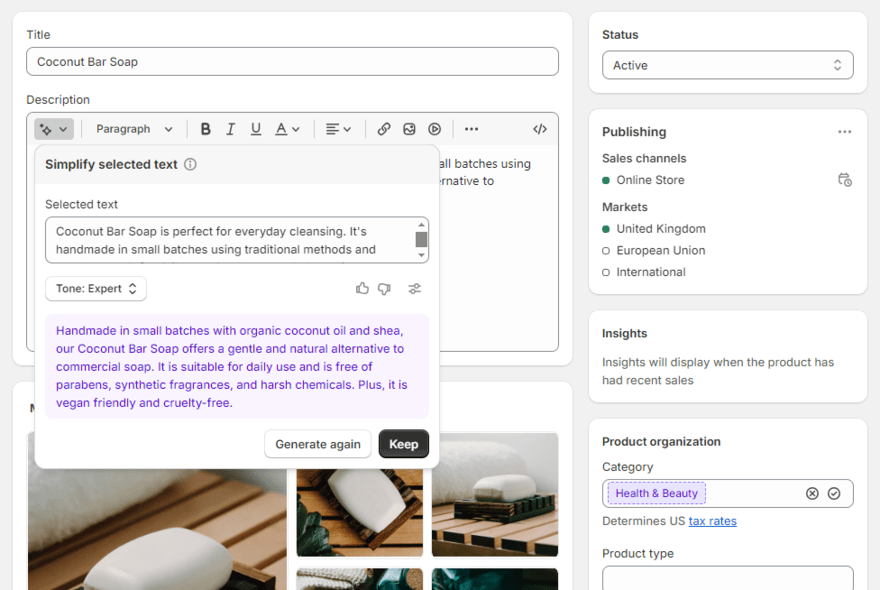
However, once you get to designing your store, issues start to appear. While Shopify’s drag-and-drop does make placing your features simple, our testers actually got lost a few times finding items. The editor is so ecommerce-focused, that finding menus to make new pages or text boxes became a struggle – one tester when using Shopify said:
“Maybe like a little checklist would have been nice, like [when] I had gotten lost”
WordPress, on the other hand, has no drag-and-drop editor – but does have access to something Shopify doesn’t: website-building plugins.

WordPress, on the other hand, is a little more complex. For starters, you’ll need to know how to code – even if it’s just at a basic level – to use the platform.
It’s also not naturally set up to sell online, so you will need to install a plugin to make your website ecommerce ready.
There are plenty of ecommerce plugins out there – such as WooCommerce, Ecwid, and BigCommerce – so it’s important to spend some time reading up on them before deciding which to use.
Like Shopify, WordPress has its own centralized dashboard where you can manage your website. Because WordPress is such a vast platform, it can get a little overwhelming as there are simply so many tools and options.

Thanks to its open-source nature, the developers behind plugins like Elementor, SeedProd, Pagebuilder, and even WooCommerce, have turned WordPress into a more traditional website builder with drag-and-drop capabilities.
These plugins come with all the best editing tools you need, and unlike Shopify, if you don’t like the editor, you can try out a new one! With Shopify, you are forced to learn how to navigate through its editor or pay a professional web developer to build your website. WordPress lets you pick and choose, ultimately having better ease of use.
The Winner
WordPress has the best setup experience
Who Has the Best Templates? – WordPress
Templates (often referred to as themes) are the basic layout of your website. Instead of starting from a blank page, you can design your site from an example, giving you a better idea of what you should be aiming for.
Shopify has over 100 themes for you to pick from, but disappointingly only 12 of these themes are free, while the other 60+ start from $140. That sounds steep, but it’s a one-off investment that helps bring your website to life.
Importantly, these are all mobile responsive, meaning your site’s layout will adapt automatically to fit different screen sizes when people are browsing on their mobile or tablet. Over 60% of global internet traffic has come from mobile devices so far this year, so it’s not an area one should dismiss.
When it comes to choice, WordPress blows Shopify out of the water. WordPress offers over 11,000 themes – with 1,000 of them just for ecommerce. There are also plenty more themes that plugins like WooCommerce either provide themselves or that are made by third-party developers.
WordPress recently made this easier in its 6.3 version update with the introduction of ‘Patterns’. These are pre-made blocks in certain styles, which you can add and remove as one element, syncing across all your other pages.
Inevitably, with such a large range to pick from, some WordPress themes are better than others. Not all are mobile responsive, and the ones not designed by WordPress itself may clash with the platform when updates roll around. However, with over 11,000 to browse, you are bound to find one you connect with.

The Winner
WordPress has better templates
How We Test
We rigorously evaluate all our website builders using our research methodology to ensure our readers receive the most precise information and a robust foundation for our recommendations. However, our assessment doesn’t solely rely on research; our writers possess hands-on testing with each provider we discuss. Therefore, when we offer an opinion on a builder, whether positive or negative, it stems from experience.
In articles like this comparison between Shopify and WordPress, we meticulously consider the target audience for both platforms. Taking on the perspective of someone seeking an online store, we blend it with our expertise to determine the winners in each category. This approach allows us to provide insights that are both informed and empathetic to the needs of our readers.
Shopify vs WordPress: Summary
In this battle of ecommerce platform vs open source – there can only be one winner. Overall, Shopify is our recommendation for those seeking to build an online store. Not only are its sales features the best we’ve tested, but the convenience of having everything in one place can’t be overstated, especially for newcomers.
With WordPress, your success is entirely dependent on which plugins you decide to use. If you want an online store, you will most likely need to use WooCommerce. To see how we rated WooCommerce vs Shopify specifically, read our article.
Which one you decide on ultimately comes down to your budget and skill level. For us, Shopify is the better overall platform for ecommerce websites. You have everything you need to be successful and grow, all packed into one, easy-to-use dashboard.
Which one you decide on ultimately comes down to your budget and skill level. For us, Shopify is the better overall platform for ecommerce websites. You have everything you need to be successful and grow, all packed into one, easy-to-use dashboard.
Website Builder Expert aims to provide you with honest data. That’s why we conduct our own research and obtain direct, personal insight. Click here for further information.


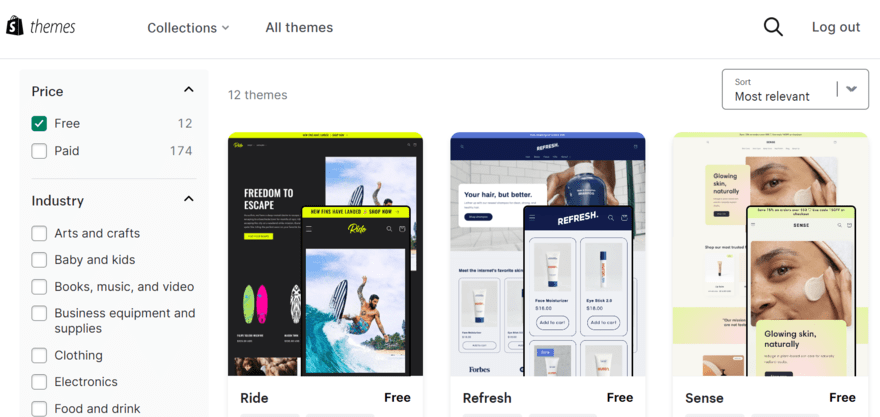
3 comments